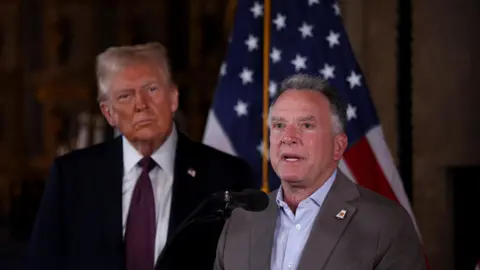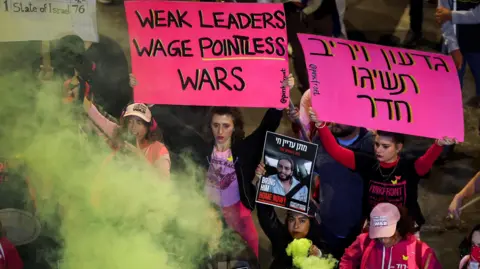Hopes for a ceasefire in Gaza are rising as pressure mounts on Hamas and Israel

 AFP
AFPThe draft Gaza ceasefire and hostage release currently being negotiated by Israel and Hamas in indirect talks in Doha has been on the table since May. So why is there new hope that it can work, after being frozen for eight months of war?
A few things have changed – both politically and in the world.
The first is the election of Donald Trump as the next president of the United States.
You did it threatening that “all hell” would break loose if the hostages are not released before he takes office on January 20.
Hamas may read that as a sign that even the small brakes the Biden administration used to try to strengthen the Israeli government will be removed, though it's hard to imagine what that would mean for a region already devastated by 15 months of war. .
Israel is also feeling pressure from the incoming president to end the conflict in Gaza, which threatens to derail Trump's hopes for a comprehensive regional agreement, as well as his desired image as a war-ending president.
 Reuters
ReutersOn the other hand, Israeli Prime Minister Benjamin Netanyahu is facing constant pressure from his far-right coalition partners to continue the war.
But Trump may be useful in persuading his allies to swallow the deal and stay in government; The new US president and the man he chose as ambassador to Israel appear to support Israeli settlements in the West Bank played out, Israel's Finance Minister, Bezalel Smotrich, he said he wanted to annex.
But after the meeting with the prime minister last night, Smotrich appeared to be unsure, writing on social media that the current agreement is a “disaster” for Israel's national security and he will not support it.
Others in Israel, however, believe that both Smotrich and his right-wing counterpart, National Security Minister Itamar Ben-Gvir, see their current role in the Israeli government as their best opportunity to tighten control over the West Bank, especially as Trump returns to the country. White House, and that they are unlikely to follow through on their threats to quit.
 Reuters
ReutersThe second thing that has changed is the growing pressure on Netanyahu since his military establishment.
Key figures are reported to have repeatedly challenged him about the diminishing military objectives in the war, after the killing of senior Hamas leadership, and the destruction of Gaza.
Last week, 10 Israeli soldiers were killed in Gaza, shedding new light on the cost of the war in Israel, and the lingering question of whether Netanyahu's promised “total victory” over Hamas can be achieved.
Some analysts now suggest that Hamas is rebuilding faster than Israel is defeating it, and therefore Israel must reconsider its strategy.
And there is a third – regional – shift in expectations here as well: the decline and erosion of Hamas' alliances Iran's “Axis of Resistance”.from Hezbollah in Lebanon to Bashar al-Assad in Syria, and the assassination of Hamas leader Yahya Sinwar in Gaza.
 Reuters
ReutersFor all these reasons, now is seen as the best chance in months to bridge the gap between Israel and Hamas and end the war.
What hasn't changed in eight months, they last discussed the gaps between them.
Key among them is the direct conflict between the main concerns of Hamas, which wants to end the war, and that of Israel, which wants to keep the door open to renewed conflict, whether it is for political or military reasons.
agreement, as described by President Joe Biden in Mayit is divided into three categories, and the indefinite suspension will only apply to the second category.
Success will now depend on whether assurances can be found to ease Hamas' fears that Israel will pull out of the deal after the first phase of hostage releases.
Questions about how to manage Israel's territory are also unclear at the moment.
But the web of diplomatic talks that criss-crossed the region in the past week, and the fact that Netanyahu sent the heads of Israel's security agencies to the talks in Doha, along with a key political adviser, are encouraging signs.
So is the trip to Doha of the organizer of Palestinian prisoners, Qadoura Fares.
A deal has yet to be done – and talks have broken down before.
The old agreement fuels new hopes in part because the negotiations are taking place in a new regional context, with growing pressures at home and with allies abroad.
Source link



